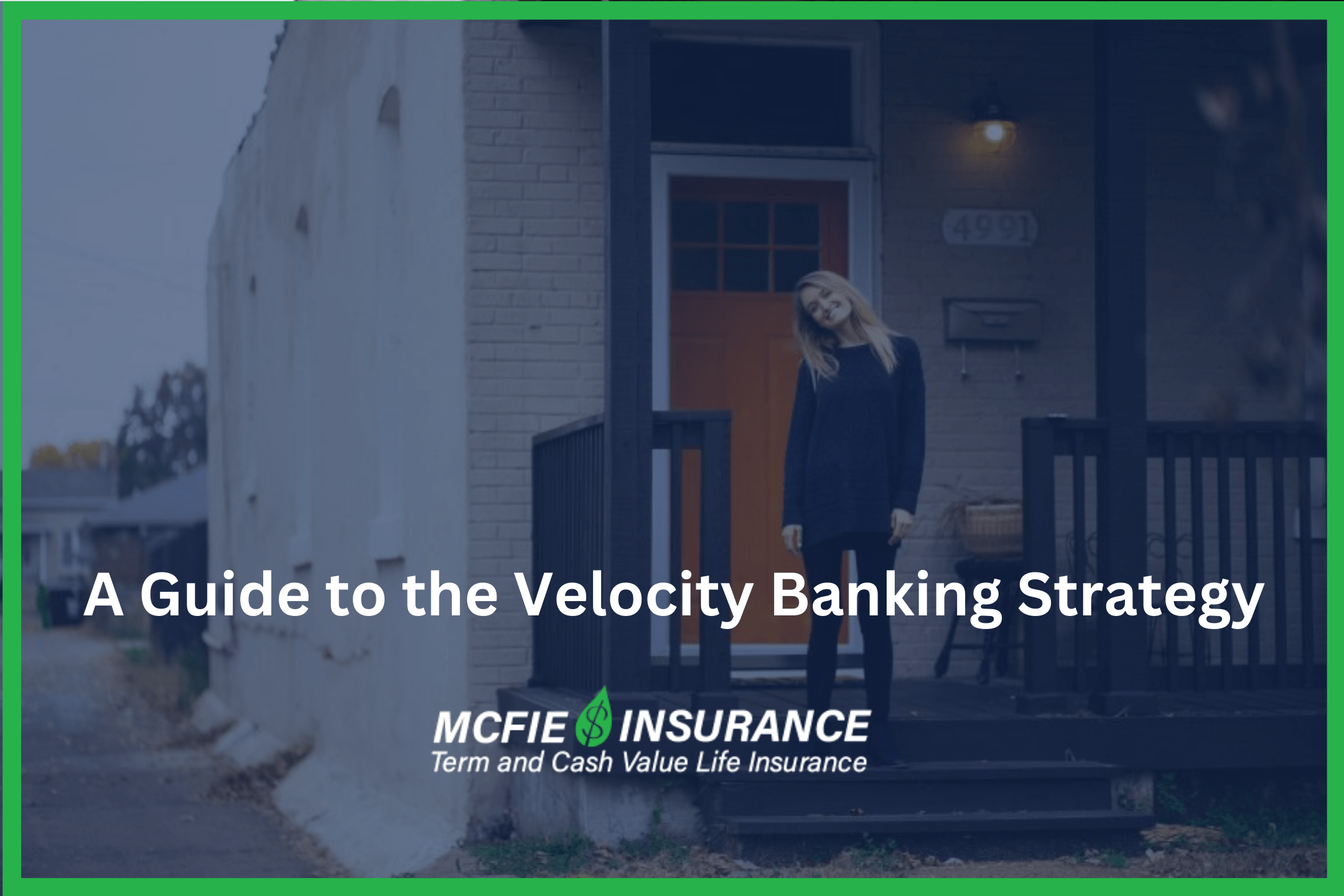702-660-7000
702-660-7000

AUTHOR’S NOTE JUNE 2023: As interest rates have increased through 2022-2023, Velocity Banking is becoming less popular because it depends on access to a Home Equity Line of Credit (HELOC) where the interest rate is usually variable – recently increasing. This article was written a few years ago and highlights potential issues with the Velocity Banking strategy even in a low interest rate environment.
When you become a homeowner, you may hear about the velocity banking strategy. Some people will tell you it’s a great way to pay off your mortgage in 5–7 years while others may tell you velocity banking is a scam. In this article, we’ll discuss what the velocity banking strategy is, how it works, and how to determine if it’s a good fit for you.
Velocity banking is a strategy where you use a line of credit as your primary account and use lump sums to pay off a loan, usually a mortgage. The idea behind this is that using a line of credit will help you use your cash flow and extra money to cover your expenses but also go toward paying off your mortgage. Most often the velocity banking strategy utilizes a Home Equity Line of Credit (HELOC), and the HELOC functions as your primary expense account instead of a checking account. This eliminates the need for a savings account since all your free cash flow will go toward the mortgage via the HELOC. People who use the velocity banking strategy believe it will allow them to pay off their mortgages faster and with less interest.
 | Understanding the Infinite Banking Concept and How It Works In Our Modern Environment 31-page eBook from McFie Insurance Order here> |
Although the velocity banking strategy can work out theoretically on paper, there are many factors that are likely to change your actual results along the way.
Here’s an example to show how the velocity banking strategy works in theory. For this example, pretend that you have a mortgage of $100,000 at a 5% Annual Percentage Rate (APR). You also have an income of $4,000 a month and you spend $3,000 on miscellaneous expenses including your mortgage payment each month. This leaves you with $1,000 a month of discretionary cash flow.
You decide to use the velocity banking strategy, and you open a HELOC with a credit limit of $25,000 at 5% APR (based on your appraised home value of $125,000). Here’s how this could play out for you.
First, you make a lump sum payment from the HELOC to your mortgage. You could transfer up to $25,000, but it is wise to keep a “reserve”, and maybe you only draw $12,000 on the HELOC to start. Your mortgage balance is now $88,000 with your HELOC balance at $12,000. You take your monthly income of $4,000 and make a payment on the HELOC so the HELOC balance goes down to $8,000.
Over the course of the month, you put your living expenses on a credit card, and at the end of the month, you draw $3,000 on the HELOC to pay off the credit card and also to make your monthly mortgage payment of $537. Your HELOC balance is now about $11,000 + interest which is about $33 for the first month.

Discover The Perpetual Wealth Code™, an easy system to maximize the control of your savings and minimize penalties so you can keep more of the money you make and build wealth every year WITHOUT riding the market roller-coaster. Download here>
Next month, you put your paycheck toward the HELOC at the beginning of the month and then pay monthly living expenses and the mortgage payment from the HELOC at the end of the month. This is commonly called “paycheck-parking.” Continuing this process, the balance on your HELOC is reduced by about 1,000, minus interest on the HELOC each month.
After 9 months, your HELOC balance is down to about $4,000, so you can make another lump sum payment of $12,000 from the HELOC to your mortgage. Now the mortgage balance is $74,442 with the HELOC at $15,154 and the total at $89,596.
You’ve now paid off 10.40% of your total mortgage and HELOC in nine months. Continue this velocity banking process and you will pay off your entire mortgage and HELOC combo in six years and four months.
If you had simply made an extra payment of $1,000 a month to your mortgage during this time without utilizing the Velocity Banking strategy and paycheck-parking strategies, it would take you six years and five months to pay off your entire mortgage.
This gives the Velocity Banking strategy a one-month advantage and $1,458 of interest saved.
The velocity banking strategy sounds very appealing on the surface. Many believe velocity banking will benefit them by allowing them to pay off their mortgage early. But there are a few underlying assumptions the velocity banking strategy makes that can fall apart in reality and leave you with more financial burdens than you intended. Here are some of the common assumptions and problems with those assumptions:
The velocity banking strategy relies on the assumption that you need to pay off your mortgage as quickly as possible while using all of your available funds to do so. This may sound counterintuitive, but you may not want to pay off your mortgage as quickly as possible. Your home is often your biggest liability, and it isn’t necessarily bad to have a mortgage on it. Instead, it’s more financially savvy to continue to pay off your mortgage while using some of your free cash flow to build cash value in whole life insurance, invest, or grow your savings in other ways. While velocity banking allows you to pay off your mortgage quickly, it can cause a gap in your long-term savings.
 | Tools of the Trade - How to Use the Cash Value in Your Life Insurance A quick reference guide on how policy loans work, how to make loan repayments and how to track your loans. |
Velocity banking relies on the assumption that you need to save interest to truly benefit from paying off your mortgage early. While interest payments can add up and be a hassle, they aren’t necessarily the most important factor. When you get caught up in saving interest, you can forget that you’re using all of your free cash toward that purpose. Yes, paying off liabilities will result in lower interest payments. But it also can result in using all of your free cash and experiencing lost opportunity in the long run.
Yes, the velocity banking strategy can help increase your home equity. But that’s not savings, and you might not always be able to access it. The problem here is that for money to truly count as savings, it must have maximum liquidity and safety. You must be able to access the cash reliably and quickly for it to serve you well when you need it. So while you may increase your home equity, velocity banking doesn’t increase the money you can access and use.
For velocity banking to be successful, it needs these assumptions to hold true. For some people, velocity banking may help and be in line with their financial goals. But for those who want to save for retirement, want the security of a life insurance death benefit, or want to utilize the life insurance cash value, velocity banking may not be the best strategy.
Lack of security is one of velocity banking’s major challenges. The velocity banking strategy may fall through for a variety of reasons. If the interest rate on your HELOC changes, if the housing market drops and lowers your credit access, if the bank freezes your line of credit, or even if your cash flow changes, you may find the numbers don’t work out.
Additionally, you may find that you missed out on seven crucial years of saving for your future while velocity banking put all your money into your mortgage and the HELOC. This is where whole life insurance comes in. You may have heard of the infinite banking principle, but this strategy can go by many names. This strategy involves using a participating whole life insurance policy to accumulate cash value while also having the security of a death benefit to help your family should you need it.
 57-page slide deck 57-page slide deck | Many people are losing money with typical financial planning. Even people who were “set for life” are running out of money in retirement. Here’s an easy guide with 3 things you can do to become wealthier. Download here> |
Where the velocity banking strategy can crumble, whole life insurance can thrive. Whole life insurance provides the security of maximum liquidity and safety of your cash value, which means you can access it at any time. You can even borrow against your life insurance cash value through a policy loan to avoid challenges or to self-finance purchases and investments in the future. The main appeal of using life insurance is that you are in control whereas velocity banking provides less discretion and control over your cash flow.
Determining the right financial strategy for your situation can be tricky, especially when there are so many options available like infinite banking, the velocity banking strategy, and others. If you’re still unsure about if any of these strategies could work for you, schedule a free consultation with our financial experts.
 by John T. McFie
by John T. McFie
I am a licensed life insurance agent, and co-host of the Wealth Talks podcast.
At age 14 I started developing spreadsheet models and software systems to help my Dad share financial concepts with clients.
Skipped college at 17 recognizing the overinflated value and prices of most college degrees and built more financial software instead (see MoneyTools.net). Still a strong advocate of higher education without going to college. I enjoy making financial strategies clear and working through the numbers to prove results you can count upon.